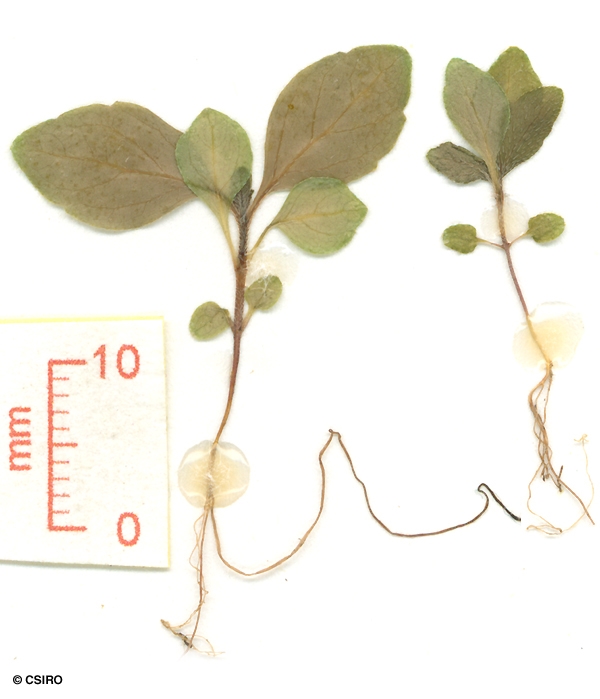Australian Tropical Rainforest Plants - Online edition
Verbena litoralis Kunth




Kunth, C.S. in Humboldt, F.W.H.A. von, Bonpland, A.J.A. & Kunth, C.S. (1818), Nova Genera et Species Plantarum 2(7): 276, t. 137. Type: F.W.H.A. Humboldt & A.J.A.Bonpland s.n, "in salsis maritimis Oceani Pacifici prope Truxillo, Santa et Lima", Peru (P Lectotype).
Common Vervain; Vervain; European Vervain; Common Verbena; Holywort
Usually flowers and fruits as a shrub about 1-2 m tall.
Flowers borne in numerous long narrow terminal spikes about 5-20 cm long. Flowers small, about 1-1.5 mm diam. Spikes usually arranged in loose cymose inflorescences. Calyx about 3 mm long, branched. Corolla tube 3-4 mm long, densely hairy in the throat, basal part of the corolla tube white or cream. Corolla lobes about 0.6 mm long, mauve, tube pink or reddish towards the apex, Pairs of stamens attached at different levels in the corolla tube. Anthers less than 0.5 mm diam., filaments very short, about 0.2 mm long. Style about 1 mm long. Stigma +/- globular but with a lateral spur.
Cotyledons +/- ovate, about 2-5 x 2-4 mm, apex rounded but ending in a short blunt gland-like mucro, base truncate. Petioles about 2-3 mm long. First pair of leaves opposite, margin finely toothed, stem hairy. At the tenth leaf stage: leaf blade sessile or almost sessile (petiole about 2-3 mm long), leaf blade margin serrate, both the upper and lower surfaces of the leaf blade and the stem clothed in white erect hairs. Seed germination time 18 to 239 days.
An introduced species originally from southern Europe now naturalised in NEQ, CEQ and most parts of eastern Australia as far south as Tasmania. Altitudinal range in NEQ from near sea level to 900 m. Usually grows as a weed of agricultural land but also found along roads and in disturbed areas in rain forest.





